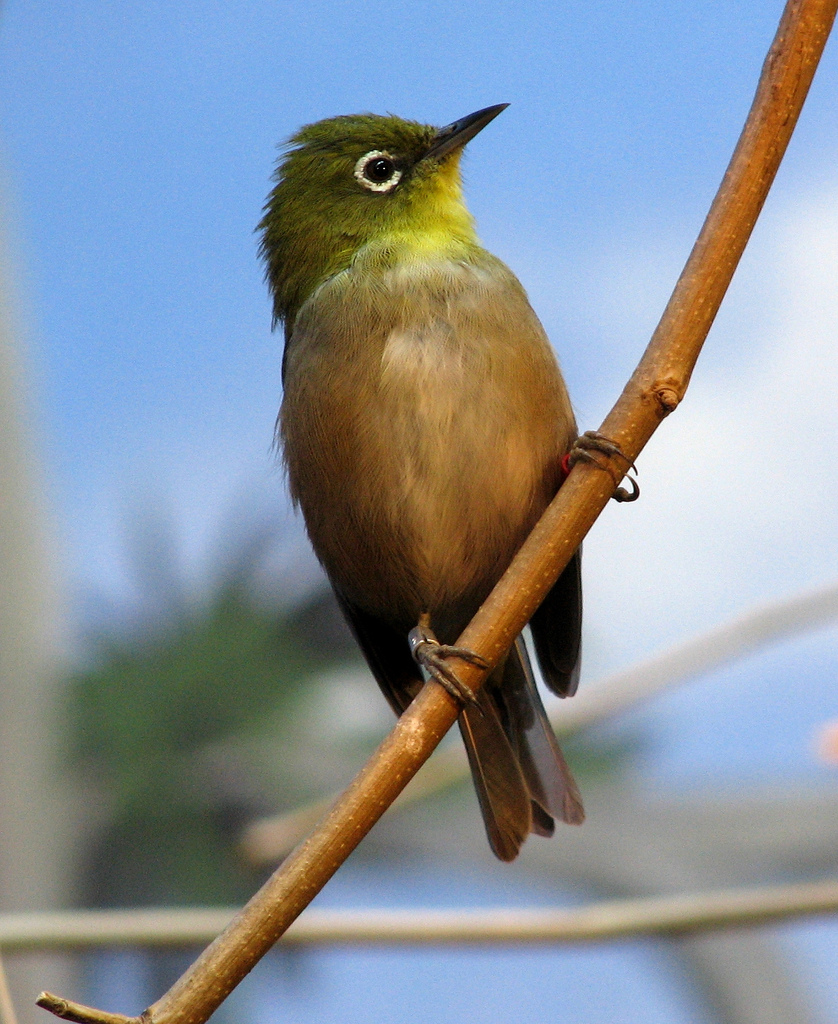Japanese White-eye (Zosterops japonicus) - Wiki Japanese White-eye
From Wikipedia, the free encyclopedia
[Photo] Japanese White-eye at Louisville Zoo. Date July 03, 2007 at 18:32. Author Trisha Shears (http://www.flickr.com/people/19598613@N00) from Louisville, Kentucky, United States
The Japanese White-eye, or Mejiro (Zosterops japonicus or japonica) is a small passerine bird in the white-eye family. Its original native range includes much of east Asia, including Japan, China, Vietnam, and the Philippines. It has been intentionally introduced to other parts of the world as a pet and as pest control, with mixed results. As one of the native species of the Japanese islands, it has been depicted in Japanese art on numerous occasions, and historically was kept as a cage bird.
The Japanese White-eye is about 4 to 4.5 inches in size, with a yellow forehead, a greenish back, and dark brown wings and tail outlined in green. Like other white-eyes, this species exhibits the distinctive white eyering that gives it its name (mejiro also meaning "white eye" in Japanese). It is omnivorous, feeding primarily on insects and nectar.
Introduced to Hawaii in 1929 as a means of insect control, it has since become the most common bird on the Hawaiian Islands, and has become a vector for avian parasites that are now known to adversely affect populations of native birds such as Hawaiian honeycreepers, as well as spreading invasive plant species through discarded seeds.
http://en.wikipedia.org/wiki/Japanese_White-eye
| The text in this page is based on the copyrighted Wikipedia article shown in above URL. It is used under the GNU Free Documentation License. You may redistribute it, verbatim or modified, providing that you comply with the terms of the GFDL. |
